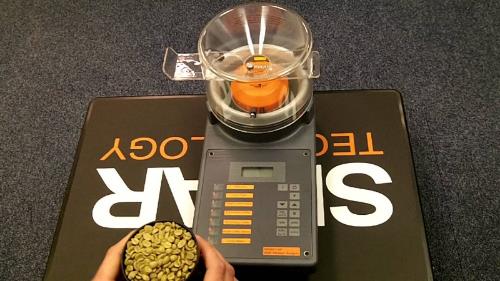Why Do I Get Different Moisture Readings From My Grainspear At The Top Of The Heap To The Bottom
There are two main reasons for this.
- 1. Grain compaction.
- 2. Temperature stability.
If the grain has only just been laid, then the compaction is uneven throughout the depth and will become stable after a few days on the floor or in the bin. You’ll see the readings stabilise as the compaction settles down.
If the grain has been down for some time, then most commonly the GrainSpear hasn’t been inserted into the grain far enough, it really needs to go in for approximately half its length to get an accurate reading.
When the GrainSpear is initially turned on, the first reading it displays is temperature. This is deliberate, as the temperature of the sensor needs to stabilise before a moisture reading is taken. The most common error is for the operator to switch the instrument immediately to moisture before inserting the spear and not allowing the temperature to settle.
What Margin Of Error Should I Allow On Grain I Sell?
That depends on how good your sampling regime is, because sampling is often the biggest source of error in moisture measurement. The more samples you do per load the more confident you’ll be about the accuracy. Typically +/- 0.5% would be a sensible margin of error to use.
Why Does Grain From One Harvest Seem To Give Different Results To The Next?
There are two questions here.
- Is the reading in one year different to a reading in another for the same product?
- Is there great variability within samples from one year but not in another?
If the question is 1), then growing and harvesting conditions will be different year to year and can affect the readings especially with freshly harvested grains. These differences will usually disappear within a week or two once stored.
If the question is 2), then this usually means that something affected the harvesting, such as lodging, sprouting or a high proportion of green grains. Also other things will affect resistance and capacitance readings, such as soil contamination, screenings or other non-grain material. Also ensure that the correct volume of sample is used for testing, the smaller the volume, the greater the error. If you’re not sure what the volume should be, check the instrument user manual or call the Sinar Technology Service Centre.
Don’t be too eager to get the crop in, make sure it’s fully ripe before harvesting as a lot of technical problems are due to unripe seed within the sample, particularly with Oilseed Rape.
Why Are The Results Off The Drier Different From Those Using In-bin Samples Taken A Few Days Later?
The moisture in the samples off the drier will not be distributed evenly and also the temperature will not be stable. Allowing the commodity to settle for a few days will even these differences out and thus provide a more consistant reading. To obtain a more accurate reading directly off the drier, spread the sample on a tin tray and allow it to cool to ambient temperature. Although our meters do have in-built temperature compensation if there is a big differential in temperature the compensation system is not as effective, i.e. hot grain out of the drier and a sample cell at ambient temperature.

